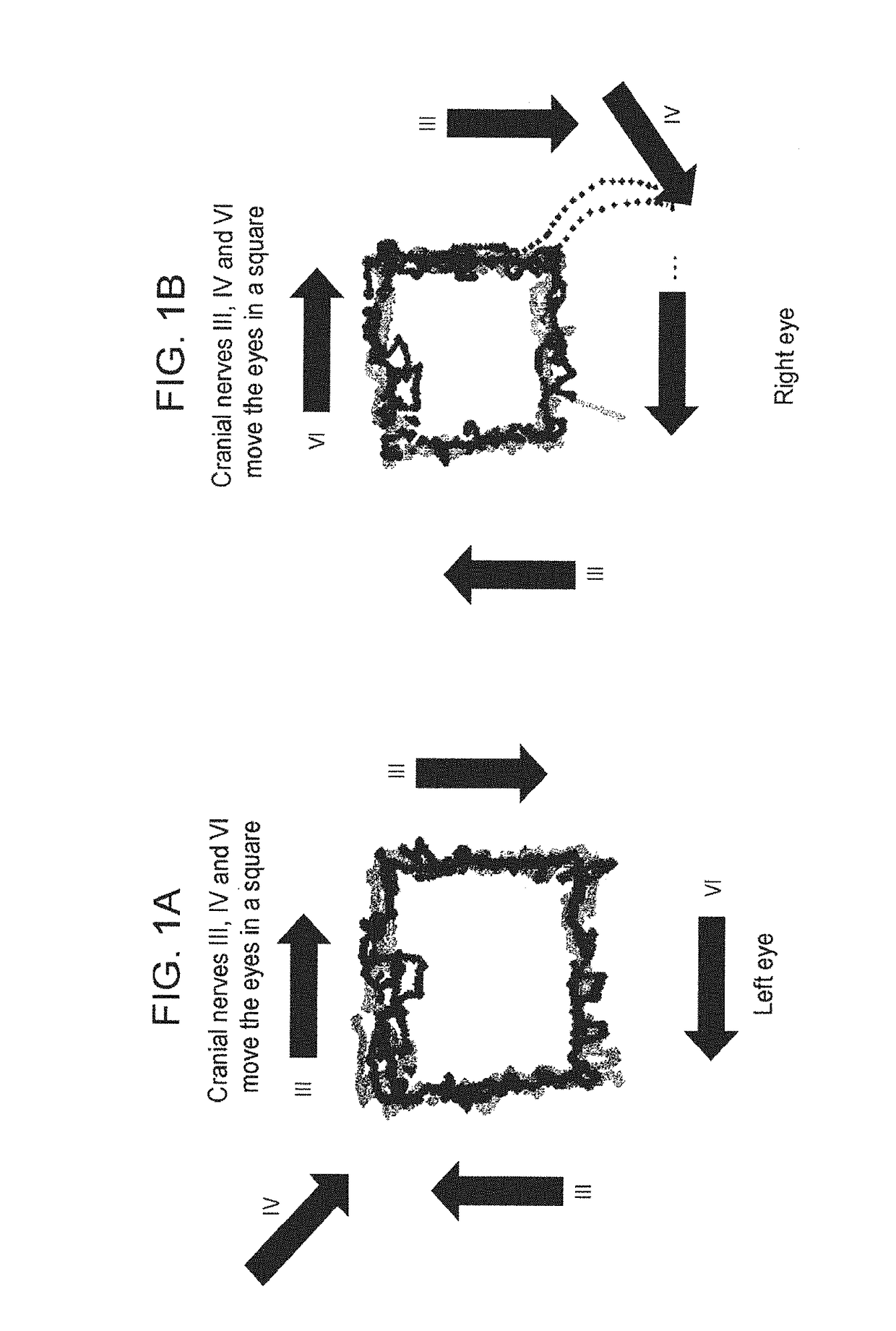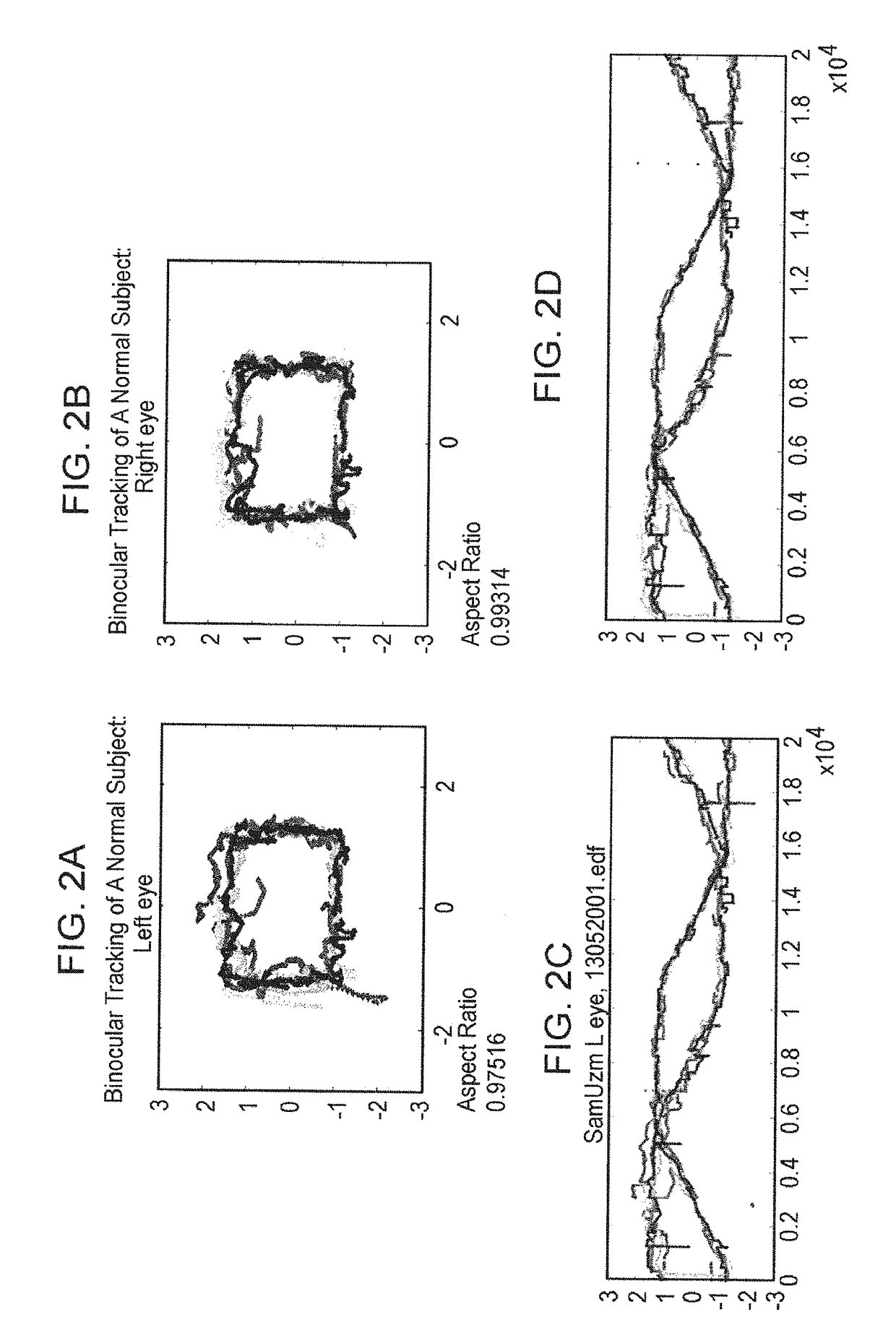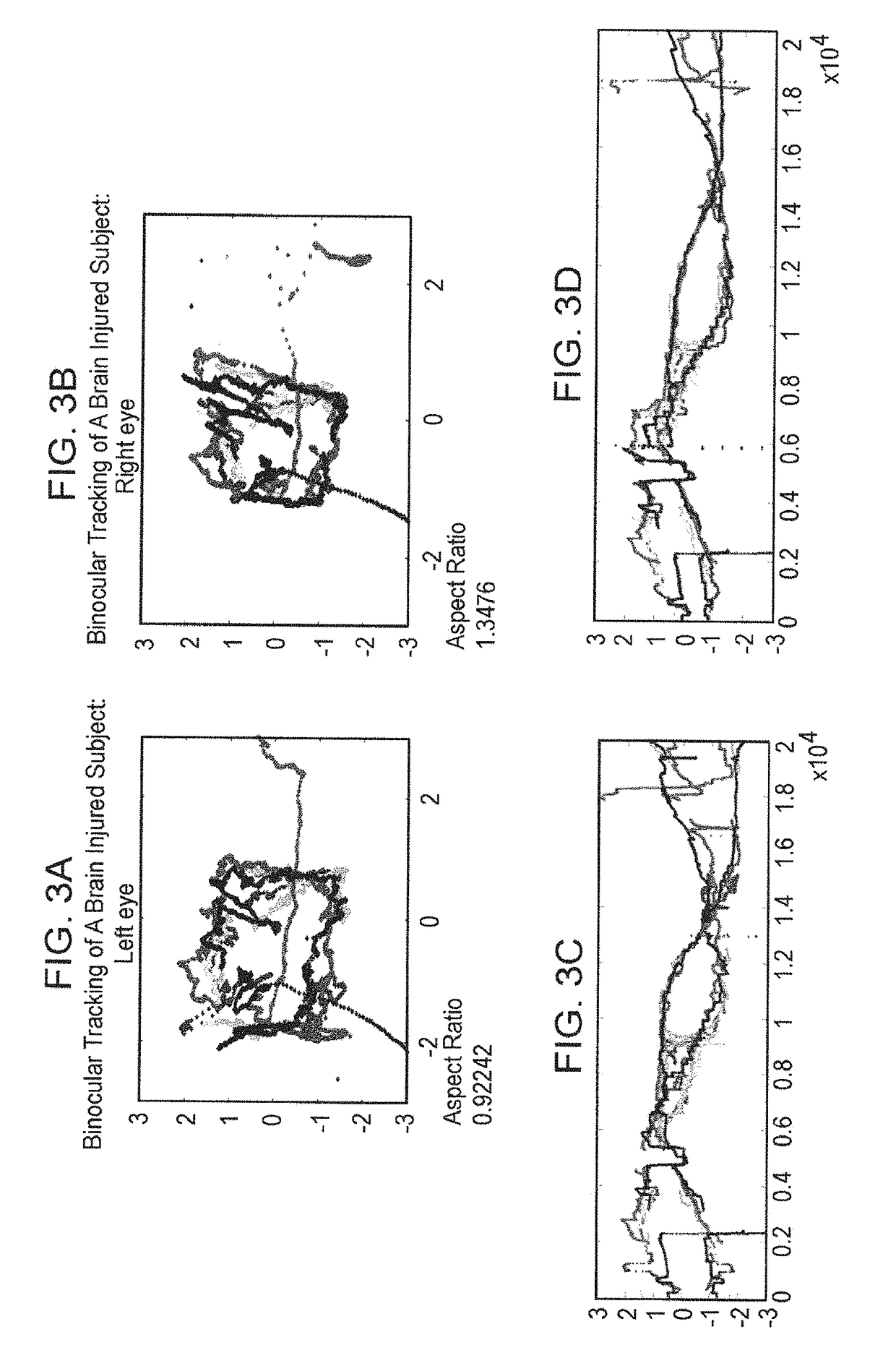Methods and kits for assessing neurological and ophthalmic function and localizing neurological lesions
a technology of applied in the field of kits for assessing neurological and ophthalmic function and localizing neurological lesions, can solve the problems of permanent neurologic impairment or death, chemical dilatation of the pupil, loss of vision, etc., and achieve the effect of impaired integration of the central nervous system
- Summary
- Abstract
- Description
- Claims
- Application Information
AI Technical Summary
Benefits of technology
Problems solved by technology
Method used
Image
Examples
example 1
Background
[0327]Eye movements contain clinically important information about neurological integrity. Clinical devices may take advantage of the relative ease of automated eye-movement tracking, for applications such as assessing recovery following clinical intervention. A technique was designed that can reliably measure eye movements with precision, without initial spatial calibration. We tracked eye movements without spatial calibration in neurologically intact adults and in neurosurgical patients as they watched a short music video move around the perimeter of a screen for 220 s. Temporal features of the data were measured, rather than traditional spatial measures such as accuracy or speed.
[0328]The methods reliably discriminated between the presence and absence of neurological impairment using these uncalibrated measurements. The results indicate that this technique may be extended to assess neurologic integrity and quantify deficits, simply by having patients watch TV.
[0329]Thes...
example 2
Materials and Methods
[0364]Subjects.
[0365]Healthy subjects were recruited in a university setting in accordance with IRB approved protocols. All other subjects were recruited directly from our neurosurgical practice. Informed consent from the subject or their legal proxy was obtained for prospective data collection in all cases in accordance with IRB guidelines.
[0366]Eye Movement Tracking.
[0367]The subjects' eye movements were recorded using an Eyelink 1000 binocular eye tracker (500 Hz sampling, SR Research). Healthy volunteers were seated 55 cm from the screen with their head stabilized using a chinrest. Stimulus was presented on average 55 cm from patient eyes, with the presentation monitor adjusted to match gaze direction. Subjects used a chinrest.
[0368]Innovations for Tracking Patients.
[0369]Two innovations were provided to measure ocular motility in a patient population. The first was a paradigm, consisting of a stimulus and an analysis stream that allows interpreting raw eye ...
example 3
Materials and Methods
[0389]Patient Selection.
[0390]Control subjects were employees, volunteers, visitors and patients at the Bellevue Hospital Center recruited in accordance with Institutional Review Board policy. Inclusion criteria for normal control subjects were: age 7 to 100 years, vision correctable to within 20 / 500 bilaterally, intact ocular motility, and ability to provide a complete ophthalmologic, medical and neurologic history as well as medications / drugs / alcohol consumed within the 24 hours prior to tracking. Parents were asked to corroborate details of the above for children aged 7-17. Exclusion criteria were history of: strabismus, diplopia, palsy of cranial nerves III, IV or VI, papilledema, optic neuritis or other known disorder affecting cranial nerve II, macular edema, retinal degeneration, dementia or cognitive impairment, hydrocephalus, sarcoidosis, myasthenia gravis, multiple sclerosis or other demyelinating disease, and active or acute epilepsy, stroke / hemorrhag...
PUM
 Login to View More
Login to View More Abstract
Description
Claims
Application Information
 Login to View More
Login to View More - R&D
- Intellectual Property
- Life Sciences
- Materials
- Tech Scout
- Unparalleled Data Quality
- Higher Quality Content
- 60% Fewer Hallucinations
Browse by: Latest US Patents, China's latest patents, Technical Efficacy Thesaurus, Application Domain, Technology Topic, Popular Technical Reports.
© 2025 PatSnap. All rights reserved.Legal|Privacy policy|Modern Slavery Act Transparency Statement|Sitemap|About US| Contact US: help@patsnap.com



